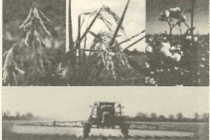2014 Cotton Maturity Guide
The annual cotton maturity guide has been updated for 2014. Cotton is unique with respect to maturity indices, especially compared to commonly grown grain crops. Generally speaking, the earliest maturing cotton varieties differ from the latest maturing cotton varieties by







